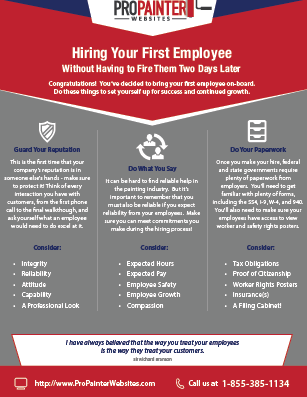Seasonal Considerations For Industrial Exterior Painting: What You Need To Know
Seasonal Considerations For Industrial Exterior Painting: What You Need To Know
Blog Article
Web Content By-Korsholm Skafte
When you're planning a commercial external paint job, seasonal aspects can make or break your results. You'll want to think about just how temperature and moisture impact paint application and drying out times. Picking home interior painters can ensure your paint sticks effectively and lasts much longer. However which seasons are genuinely the best for this type of job? Allow's discover the crucial elements that can impact your project's success.
The Effect of Temperature Level on Paint Application
When you're planning an industrial external paint project, the temperature can dramatically influence exactly how well the paint adheres and dries out.
Ideally, you wish to paint when temperature levels range between 50 ° F and 85 ° F. If it's too cool, the paint may not treat correctly, resulting in issues like peeling or cracking.
On the flip side, if it's also warm, the paint can dry out too rapidly, preventing correct attachment and leading to an unequal coating.
You must additionally consider the moment of day; morning or late afternoon supplies cooler temperatures, which can be extra desirable.
Constantly examine the supplier's suggestions for the details paint you're utilizing, as they commonly provide advice on the suitable temperature range for optimum results.
Moisture and Its Result on Drying Times
Temperature isn't the only ecological variable that affects your business exterior paint job; humidity plays a significant function too. High moisture levels can slow down drying out times significantly, influencing the total top quality of your paint work.
When the air is filled with dampness, the paint takes longer to heal, which can cause concerns like bad bond and a greater risk of mildew development. If you're painting on a specifically damp day, be planned for extended delay times in between layers.
https://www.bhg.com.au/beginners-guide-to-painting to keep an eye on neighborhood weather and strategy accordingly. Ideally, aim for moisture degrees in between 40% and 70% for optimal drying out.
Keeping these factors in mind ensures your job stays on track and supplies an enduring coating.
Best Seasons for Commercial Exterior Paint Projects
What's the most effective season for your commercial external paint jobs?
Springtime and very early loss are generally your best bets. During these periods, temperatures are mild, and moisture levels are often reduced, developing ideal problems for paint application and drying out.
Stay clear of summer's intense heat, which can cause paint to completely dry also promptly, bring about poor bond and surface. Similarly, wintertime's cool temperature levels can hinder correct drying and healing, running the risk of the long life of your paint work.
https://cesarltclt.vblogetin.com/40801588/selecting-an-appropriate-paint-business-can-greatly-improve-your-surroundings-find-the-essential-tips-that-will-certainly-guarantee-you-make-the-appropriate-choice-for-your-task for days with temperature levels in between 50 ° F and 85 ° F for optimal outcomes. Bear in mind to check the local weather prediction for rain, as wet problems can wreck your task.
Planning around these factors guarantees your paint project runs smoothly and lasts longer.
Verdict
In conclusion, preparing your industrial exterior paint projects around seasonal factors to consider can make a considerable distinction in the result. By scheduling work throughout the suitable temperatures and moisture degrees, you'll make sure better attachment and drying times. Bear in mind to watch on neighborhood weather forecasts and select the right time of year-- springtime and early fall are your best bets. Taking these steps will help you attain a sturdy and professional coating that lasts.
